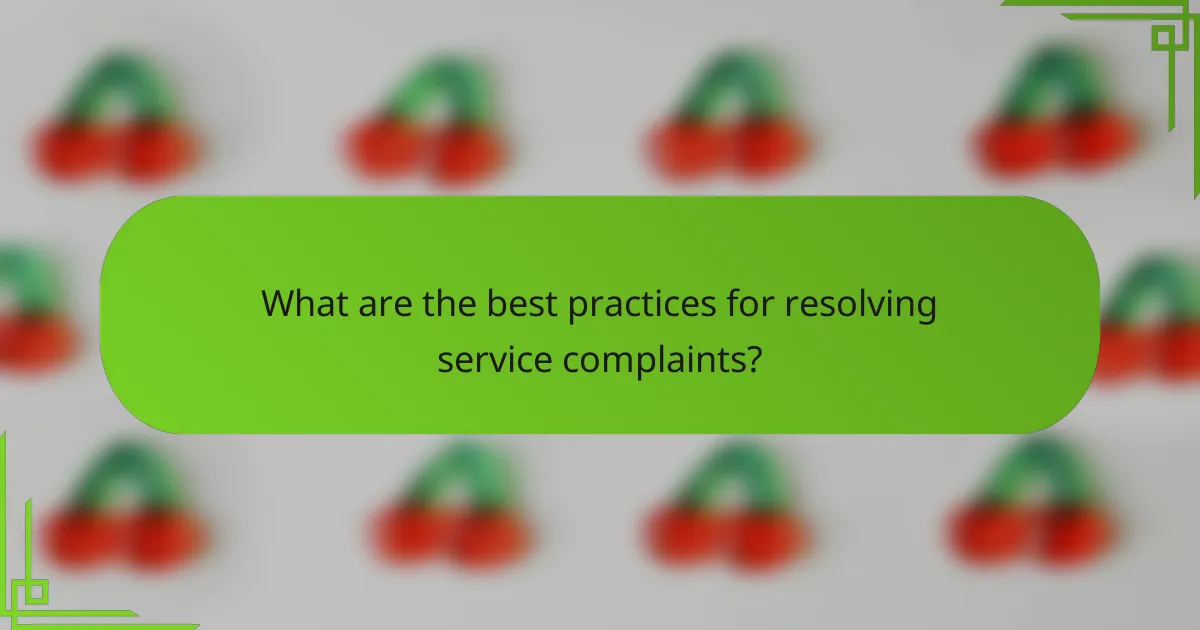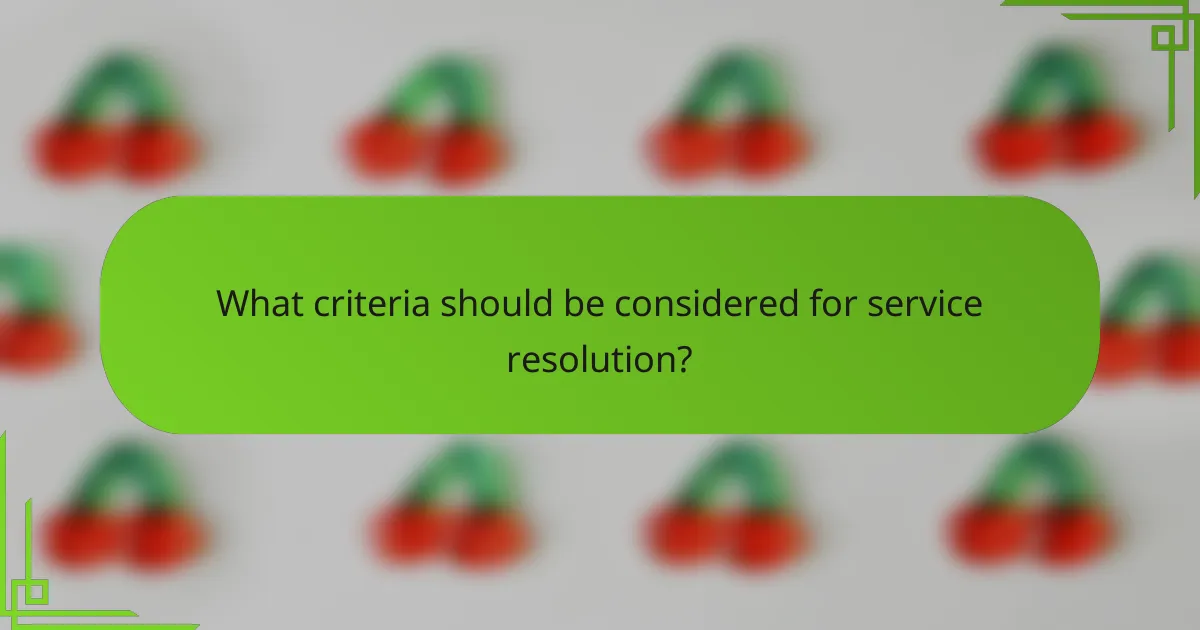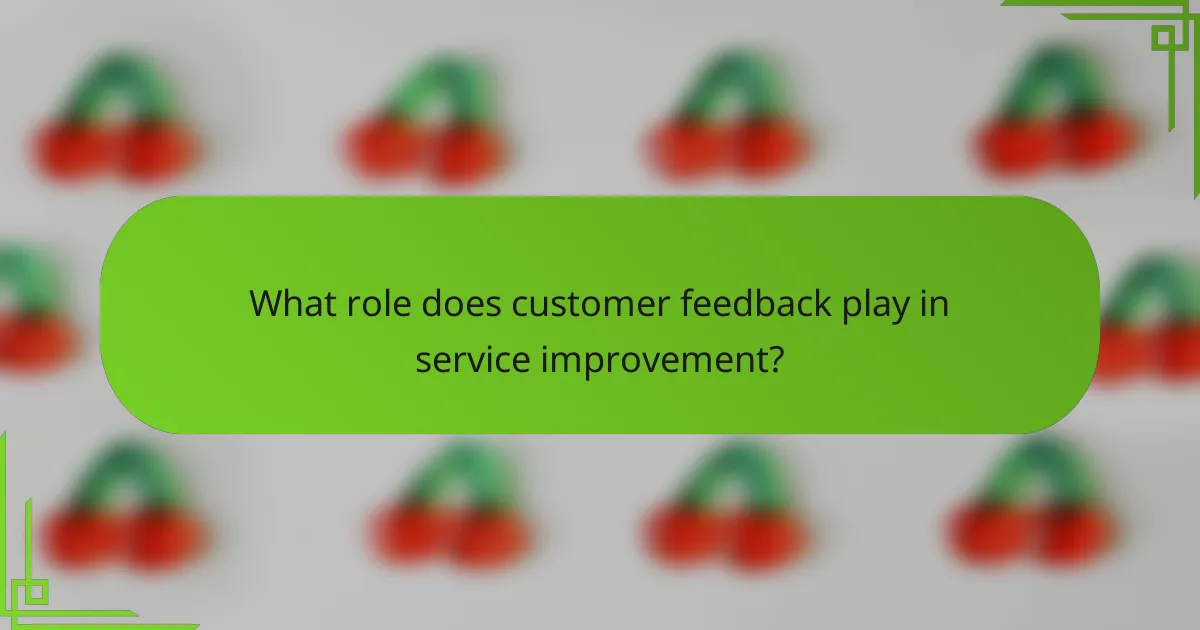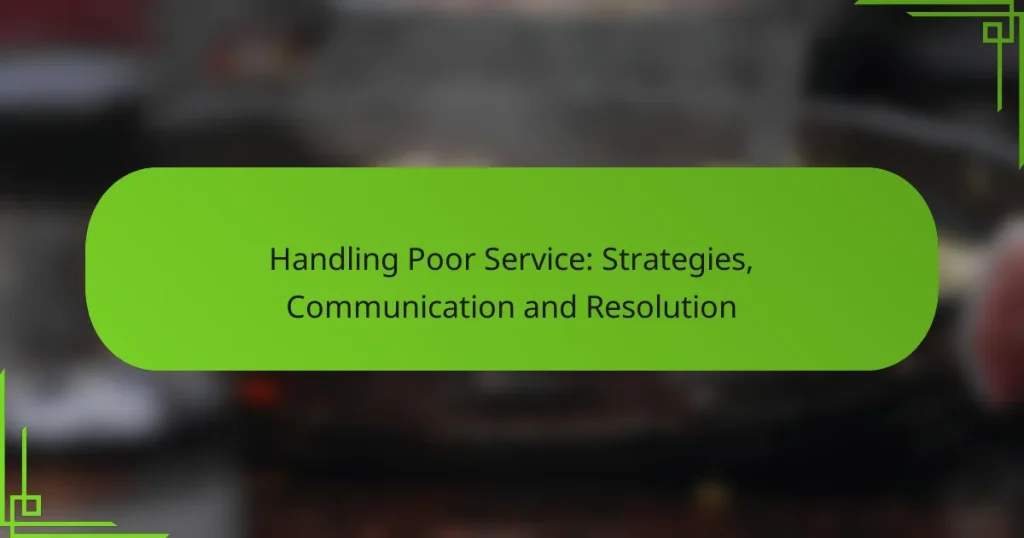Handling poor service is crucial for maintaining customer satisfaction and loyalty. By implementing effective strategies such as proactive communication and staff training, businesses can enhance the overall customer experience. Clear and specific communication about service issues is essential for prompt resolution, allowing companies to turn negative encounters into positive outcomes.

What strategies can improve service in local businesses?
Improving service in local businesses involves implementing effective strategies that enhance customer experience and satisfaction. Key approaches include proactive communication, utilizing customer feedback systems, investing in staff training programs, and establishing service recovery plans.
Proactive communication
Proactive communication entails reaching out to customers before issues arise, ensuring they feel valued and informed. This can include sending reminders for appointments, providing updates on orders, or addressing potential delays in service.
For example, a local restaurant might notify customers about changes in menu items or special promotions through email or social media. This keeps customers engaged and reduces the likelihood of dissatisfaction due to unexpected changes.
Customer feedback systems
Implementing customer feedback systems allows businesses to gather insights directly from their clientele. Surveys, comment cards, and online reviews can provide valuable information on areas needing improvement.
Local businesses should encourage feedback by offering incentives, such as discounts or loyalty points, for completing surveys. This not only helps identify service gaps but also fosters a sense of community and customer loyalty.
Staff training programs
Investing in staff training programs is crucial for ensuring employees are equipped with the skills and knowledge to deliver excellent service. Regular training sessions can cover customer service techniques, product knowledge, and conflict resolution strategies.
For instance, a retail store might conduct monthly workshops to enhance staff communication skills and product expertise, which can lead to improved customer interactions and satisfaction.
Service recovery plans
Service recovery plans are essential for addressing service failures effectively. These plans outline steps to take when a customer has a negative experience, ensuring swift and appropriate responses.
A well-defined recovery plan might include offering an apology, providing a refund or discount, and following up with the customer to ensure their concerns are resolved. This proactive approach can turn a dissatisfied customer into a loyal advocate for the business.

How to effectively communicate service issues?
Effectively communicating service issues involves being direct and specific about the problems encountered. Clear communication helps ensure that the service provider understands the issue, which is essential for a timely resolution.
Use clear and concise language
When discussing service issues, use straightforward language that avoids jargon or overly complex terms. For example, instead of saying “the service was subpar,” specify what was wrong, such as “the waiter took over 30 minutes to take our order.” This clarity helps the service provider grasp the issue quickly.
Keep your sentences short and to the point. Aim for a few key details that outline the problem without unnecessary elaboration. This approach not only saves time but also reduces the chance of misunderstandings.
Maintain a calm demeanor
Staying calm when addressing service issues is crucial for effective communication. A composed tone can foster a more productive dialogue and encourages the service representative to respond positively. Even if you are frustrated, expressing your concerns calmly can lead to better outcomes.
Practice deep breathing or take a moment to collect your thoughts before speaking. This can help you articulate your concerns without letting emotions dictate your words. Remember, the goal is to resolve the issue, not to escalate it.
Utilize active listening techniques
Active listening involves fully concentrating on what the service provider is saying, rather than just passively hearing their words. Show that you are engaged by nodding, maintaining eye contact, and summarizing their points to confirm understanding.
Ask clarifying questions if something is unclear, such as, “Can you explain how the refund process works?” This not only demonstrates your interest but also ensures that you have all the necessary information to address your service issue effectively.

What are the best practices for resolving service complaints?
Effective resolution of service complaints involves clear communication, prompt action, and a focus on customer satisfaction. By following best practices, businesses can turn negative experiences into positive outcomes, fostering loyalty and trust.
Apologize sincerely
A genuine apology can significantly impact how a customer perceives the resolution process. Acknowledge the issue and express regret for any inconvenience caused. This simple step can help diffuse tension and show that you value the customer’s experience.
Use phrases like “I’m sorry for the inconvenience” or “I understand how frustrating this must be” to convey empathy. Avoid generic apologies; tailor your response to the specific situation to make it more meaningful.
Offer immediate solutions
Providing immediate solutions is crucial to resolving service complaints effectively. Assess the situation and offer practical options that address the customer’s concerns directly. This could include refunds, replacements, or service adjustments.
For example, if a product is defective, offer a replacement or a full refund. If a service was delayed, consider providing a discount or complimentary service as a goodwill gesture. Quick resolutions can enhance customer satisfaction and demonstrate commitment to service quality.
Follow up with customers
Following up after resolving a complaint shows customers that you care about their experience beyond the immediate issue. Reach out to ensure they are satisfied with the solution and inquire if there is anything else you can assist with.
This can be done through a phone call, email, or even a feedback survey. Regular follow-ups can help build a stronger relationship with customers and provide valuable insights into your service quality.

What criteria should be considered for service resolution?
When resolving service issues, consider the severity of the problem, customer expectations, and business policies. These criteria help determine the appropriate response and ensure a satisfactory resolution for both the customer and the business.
Severity of the issue
The severity of the issue significantly influences how it should be addressed. For example, a minor delay in service may warrant a simple apology, while a major error, such as a billing mistake, could require immediate corrective action and compensation.
Assess the impact on the customer and the business. Issues that affect safety or violate regulations should be prioritized for swift resolution. A clear understanding of the severity can guide the urgency and type of response needed.
Customer expectations
Understanding customer expectations is crucial for effective service resolution. Customers typically expect timely responses, transparency, and a resolution that meets or exceeds their initial expectations. For instance, if a customer expects a full refund for a defective product, addressing this expectation promptly can help restore trust.
Gather feedback to gauge expectations accurately. Regularly surveying customers can provide insights into what they value most, allowing businesses to tailor their service resolution strategies accordingly.
Business policies
Business policies play a vital role in service resolution, as they outline the procedures and limits for addressing customer issues. Familiarize yourself with these policies to ensure compliance while resolving problems. For example, a company may have a policy that allows refunds only within a specific timeframe, which must be communicated clearly to customers.
While policies provide structure, flexibility is also important. Empower employees to use discretion in exceptional cases, which can lead to more satisfactory outcomes for customers while still adhering to overall business guidelines.

How can local businesses build trust with customers?
Local businesses can build trust with customers by prioritizing transparency, maintaining consistent service quality, and engaging effectively through social media. These strategies foster a reliable relationship that encourages customer loyalty and positive word-of-mouth.
Transparency in operations
Transparency in operations involves openly sharing information about business practices, pricing, and product sourcing. This can include clear communication about how products are made or where ingredients come from, which helps customers feel informed and valued.
For example, a local bakery might display the sourcing of its ingredients on its website or in-store. This not only builds trust but also differentiates the business from competitors who may not be as forthcoming.
Consistent service quality
Consistent service quality means delivering the same high standard of service every time a customer interacts with the business. This can be achieved through staff training, regular feedback, and quality control measures.
Businesses should aim for a service experience that meets or exceeds customer expectations, whether it’s a restaurant providing timely service or a retail store ensuring products are always in stock. Consistency helps customers know what to expect, reinforcing their trust.
Engagement through social media
Engaging customers through social media allows local businesses to connect on a personal level. Regular updates, responses to customer inquiries, and sharing behind-the-scenes content can create a sense of community and involvement.
For instance, a local coffee shop might showcase customer stories or highlight community events on its social media platforms. This not only fosters engagement but also encourages customers to feel like they are part of the business’s journey, enhancing trust and loyalty.

What role does customer feedback play in service improvement?
Customer feedback is essential for service improvement as it provides direct insights into customer experiences and expectations. By actively collecting and analyzing feedback, businesses can identify areas needing enhancement and make informed decisions to elevate service quality.
Collecting Customer Feedback
Gathering customer feedback can be achieved through various methods such as surveys, online reviews, and direct communication. Surveys can be distributed via email or social media, while online reviews on platforms like Google or Yelp offer real-time insights. Aim for a mix of quantitative questions and open-ended responses to capture a comprehensive view of customer sentiments.
Consider implementing feedback tools that allow customers to share their experiences easily. For instance, a simple rating system or a suggestion box can encourage more customers to participate, leading to a richer dataset for analysis.
Analyzing Feedback for Insights
Once feedback is collected, analyzing it effectively is crucial for identifying trends and common issues. Look for recurring themes in customer comments and quantify ratings to gauge overall satisfaction. Tools like sentiment analysis software can help in processing large volumes of feedback quickly.
Prioritize feedback based on frequency and impact. For example, if multiple customers mention long wait times, this should be addressed promptly as it directly affects customer satisfaction. Create a feedback matrix to categorize issues by severity and frequency for better clarity.
Implementing Changes Based on Feedback
Implementing changes based on customer feedback requires a structured approach. Start by developing an action plan that outlines specific changes, responsible teams, and timelines. Communicate these changes to your customers to show that their feedback is valued and taken seriously.
Monitor the impact of changes by continuing to collect feedback post-implementation. This ongoing process ensures that improvements are effective and allows for further adjustments as needed. For example, if you reduce wait times and customers report increased satisfaction, you can consider that change successful.


